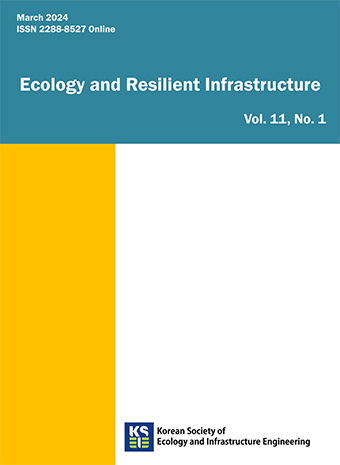Original Article
Abstract
References
Information
Huang, Y.R., Li, L., Wei, X.M., Li, H.Z., Zeng, J.Y. and Kuang, R. 2020. An investigation of mechanisms for the enhanced coagulation removal of Microcystis aeruginosa by low-frequency ultrasound under different ultrasound energy densities. Ultrasonics Sonochemistry 69: 105278.
10.1016/j.ultsonch.2020.10527832738454
Kim, G.Y., Joo, J.C., Lee, M.J., Park, J.R., Ahn, C.H. and Lee, S. 2019. Evaluation on Growth Inhibition Effect of Harmful Blue Green Algae Using TiO2-embedded Expanded Polystyrene (TiEPS) Balls: Lab-scale Indoor/ Outdoor Experiments. Journal of Korean Society Environmental Engineers 41(11): 637-646. (in Korean)
10.4491/KSEE.2019.41.11.637
Lee, M.J., Joo, J.C., Kim, G.Y., Park, J.R., Ahn, C.H. and Lee, S. 2019. Evaluation on Growth Inhibition Effect of Harmful Blue Green Algae Using TiO2-embedded Expanded Polystyrene (TiEPS) Balls: River/Reservoir Mesocosms. Journal of Korean Society Environmental Engineers 41(11): 647-656. (in Korean)
10.4491/KSEE.2019.41.11.647
- Publisher :Korean Society of Ecology and Infrastructure Engineering
- Publisher(Ko) :응용생태공학회
- Journal Title :Ecology and Resilient Infrastructure
- Journal Title(Ko) :응용생태공학회 논문집
- Volume : 8
- No :3
- Pages :143-153
- Received Date : 2021-09-07
- Revised Date : 2021-09-28
- Accepted Date : 2021-09-29
-
An Erratum to this article was published on 30 June 2022.This article has been updated.
- DOI :https://doi.org/10.17820/eri.2021.8.3.143




 Ecology and Resilient Infrastructure
Ecology and Resilient Infrastructure







